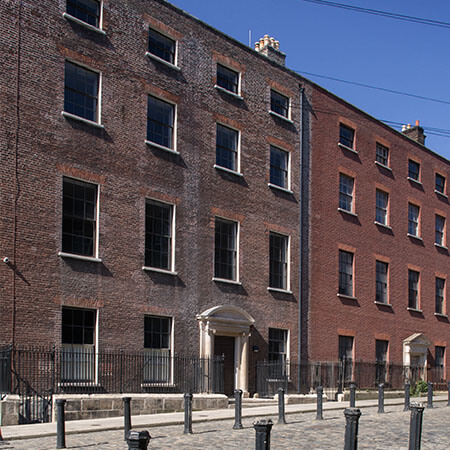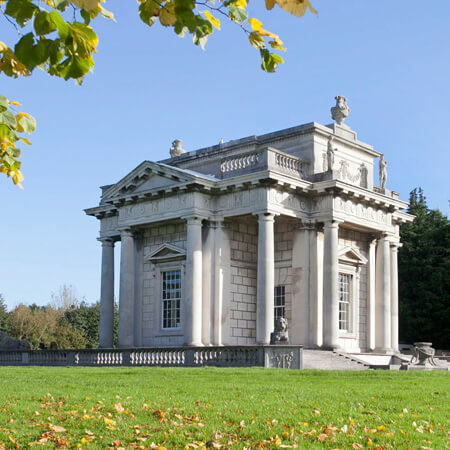Dubliners… Think you’ve seen it all? Cast your eyes skyward.
As charming as Dublin’s skyline is, it’s never exactly been noted for its towering buildings. Quite the opposite, in fact, with the highest towers in Dublin reaching an average of 60 metres.
Although this may be changing. ‘The Exo’, a 73 metre high structure in Dublin’s Docklands, was recently built and permission has been granted for other high rise developments. For now though, Dublin is low-rise in nature. And it is perhaps because of this that neither inhabitants nor visitors tend to look up very often.
There are relics of the British Empire…
There’s also the likelihood that stopping on a city centre street to peruse the vista above eye level is likely to annoy harried Dubliners.
But by neglecting to investigate what the city’s rooftops have to offer, we’re all missing a trick. At least that’s according to historian and tour guide Professor Kevin McKenna.
The Georgian architecture on Dublin’s streets
“If you were to walk at a gentler pace, it is easy to become acquainted with Edward Smyth – one of the Georgian era’s great sculptors,” he says.
“The rooftops of Dublin’s finest buildings: the Four Courts, the Custom House and the Houses of Parliament – now the Bank of Ireland on College Green – are all adorned with Smyth’s work.
The roof is dominated by a statue of Hibernia with her harp.
“There are relics of the British Empire in the form of the royal crest in tympanum on the former Houses of Parliament, while the roof is dominated by a statue of Hibernia with her harp, flanked by Commerce and Fidelity.”
Further echoes of empire can be found in the lions and unicorns on the Custom House while, in the tympanum of this building, Britannia and Hibernia embrace while Neptune chases away Famine.
Other beautiful buildings to look out for
“Edward Smyth’s son John followed his father’s calling and became a sculptor too,” says McKenna. “And his work can be seen atop The General Post Office and the Royal College of Surgeons.”
Given the recent centenary of the Easter Rising, it also seems fitting to acknowledge the sculptural contributions of James Pearse – the father of revolutionaries Padraig and Willie. His work can be viewed on top of the former National Bank on Dame Street – once home to fashion outlet Abercrombie and Fitch. It’s also on the Church of St. Augustine and St. John on Thomas Street.

General Post Office (GPO), Dublin
Then there’s the baroque style copper dome of The Rotunda Hospital on Parnell Square and the neoclassical Casino at Marino.
With Dublin being a medieval city, it doesn’t boast a proliferation of Gothic-era gargoyles and chimera. But look up and you’ll find them on Dame Street, in Temple Bar and winking above the Iveagh Markets.
The star of Dublin’s architectural heritage
However, Professor McKenna’s top recommendation for rooftop insights into Dublin’s history lies on the corner of Parliament Street and Essex Quay. All-too-often it’s ignored by commuters intent on catching their train at Heuston. And imbibers headed the other way looking for some soakage at Zaytoon.
The building that is now home to M.E. Hanahoe solicitors was built in 1901 and speaks of the city’s industrial past. It’s known as Sunlight Chambers.
It is unique because of the colourful ceramic friezes illustrating the history of hygiene.
“This building was designed by Edward Ould for the Lever brothers in 1899. It is unique because of the colourful ceramic friezes illustrating the history of hygiene,” he explains. “The subject matter should be of little surprise considering the Lever brothers were in the soap business”.
As Oscar Wilde wrote: “We are all in the gutter, but some of us are looking at the stars”. So be sure to view Dublin’s rich architecture as you stroll the city streets.
If you’d like a guide to help you experience the best of Dublin architecture, read our list of local walking tours.



